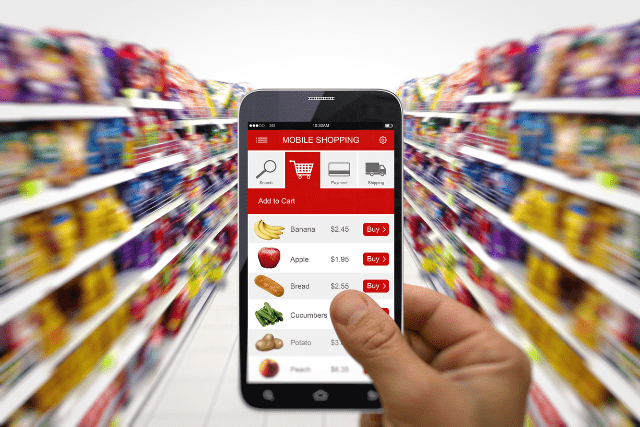Live commerce is an increasingly popular trend gaining traction in e-commerce. This exciting new online shopping method gives customers a more personal and interactive experience.
With live commerce, businesses can provide live streaming services that allow shoppers to browse products and ask sales staff questions in real-time. It’s also a great way to build customer relationships, as shoppers can interact with their favorite brands in a more intimate setting.
Table of Contents
Definition of live commerce
Live commerce, also known as shoppable or e-commerce live streaming, is an increasingly popular way of selling products online. It combines the power of a live video stream with the convenience of buying items directly from the platform.
Live commerce streams are becoming more popular on social media platforms like Instagram, Facebook, and Snapchat and on dedicated live-streaming sites like Amazon Live.
This is appealing because it lets customers shop in a way that is unique to them. By watching a live stream, shoppers can get real-time answers to their questions about products and services directly from the presenter or host.
During some streams, viewers can take advantage of exclusive discounts or offers only available during the stream itself. Ultimately, this creates an interactive shopping experience that’s both engaging and efficient for consumers.

History of live commerce
This e-commerce method has been around since the late 2000s, but it has recently seen an uptick in popularity as businesses seek to create more personal connections with their customers.
The concept of live commerce was first developed by Chinese digital influencers who wanted to give their followers a closer look at products they were promoting.
Through social media platforms such as Weibo and Taobao Live, these influencers could host virtual ‘shopping parties’ where they showed viewers various items up for sale.
Viewers could then purchase those items directly through the livestream, creating a seamless shopping experience that allowed them to engage with their favourite personalities while buying something they loved.
Why is live commerce essential and relevant today?
The emergence of Live Commerce has allowed brands to engage with their customers on a deeper level than ever before, by providing shoppers with an interactive and immersive experience that traditional methods cannot match.
By utilizing features such as product demos, Q&A sessions and customer feedback, businesses can create meaningful interactions with their target audience that will have lasting impacts on customer relationships.
Due to the immediacy of the live streaming format, it enables consumers to make quick decisions on products they are interested in purchasing and provides them with helpful feedback from other viewers in real time.

Types of live commerce
There are several types of live commerce available today.
The first type of live commerce is Live Shopping. This allows customers to shop directly from a retailer’s website or app while watching a live stream featuring the product they want to buy. The presenter will provide detailed information about the item, answer questions from viewers, and offer special discounts throughout the session.
Second is Live Tutorials which allow customers to watch online tutorials on how to use specific products or services. These tutorials often feature experts who demonstrate techniques, give tips for using the product correctly, and even answer questions from viewers in real-time.
Live streaming on social media platforms (e.g., Facebook, Instagram, TikTok)
Live streaming on social media quickly becomes a critical element of online shopping. Live streaming, also known as live commerce or l-commerce, provides consumers with an engaging and interactive experience while they shop.
This technology has seen significant growth since its introduction to major social media platforms such as Facebook, Instagram, and TikTok.
Through live streaming, brands can show off their products in real-time with little effort and cost. Consumers can watch live streams from anywhere in the world, making well-informed decisions about what they want to buy without visiting a physical store or website.
For example, brands can show off features of products that customers may not have otherwise been aware of before making their purchase decision.
Social media users can share their opinions and experiences through comments during the stream, adding an even more personalized touch when shopping online.
Live shopping on e-commerce websites (e.g., Amazon Live, QVC)
Live shopping on e-commerce websites is a new and exciting way to shop. It combines the convenience of an online store with the personal connection of a live shopping event, giving customers a chance to purchase items directly from their favourite brands in real-time.
Through platforms like Amazon Live and QVC, users can watch live shows featuring products they love and even interact with hosts and other shoppers during the show.

The experience of live shopping allows customers to connect over their shared interests and explore different product categories that may have been previously unknown to them.
With this unique form of digital commerce, customers can discover new items while also enjoying conversations with people who share similar passions for products such as fashion, beauty, electronics, and more.
In-person live events (e.g., trade shows, pop-up shops)
Live events like trade shows, pop-up shops, and more are becoming increasingly popular. Live events are an excellent way for businesses to connect with their customers by allowing them to interact with each other and feel like they’re a part of something exciting.
These events allow brands to present their products and services directly to potential customers and provide a unique setting for networking and building relationships within the industry.
Live events offer a unique way for businesses to showcase their brand personality creatively that goes beyond traditional advertising.
Companies can use these events to create immersive experiences that grab the attention of their audiences and make a good impression on potential customers. This helps build long-term relationships and customer loyalty.
Advantages and challenges of live commerce
Live commerce has several advantages, such as enabling customers to ask questions in real-time, providing direct feedback from the seller, allowing buyers to access exclusive deals or discounts, and enabling sellers to connect directly with potential customers.
However, live commerce also presents certain challenges that must be addressed. For example, because it is often done on social media platforms like Facebook Live or Instagram Live, it can be hard to keep customers engaged if they are all asking questions simultaneously during the broadcast.
Also, there could be technical problems if the quality of the stream isn’t good enough or if the comments aren’t moderated well enough.
Advantages:
Here are some absolute advantages of using Live Commerce strategies for online selling:
Increased engagement
Live commerce is an innovative way to engage customers and boost sales. It combines the convenience of online shopping with the personal customer service experience of a brick-and-mortar store.
Through the use of video streaming, customers can interact directly with brands, ask questions and receive personalized advice from knowledgeable sales staff.
Customers can shop in an interactive way through digital platforms like live streams on social media or video calling apps like Skype or Zoom. This allows them to get real-time expert feedback and make informed purchasing decisions that meet their individual needs.
Live commerce also creates opportunities for businesses to build relationships with customers by engaging them in conversations about their products and services, providing special discounts, and offering virtual product demonstrations.
Authenticity
Authenticity is at the heart of live commerce, and it’s what sets it apart from traditional forms of online shopping. Live commerce combines the convenience and accessibility of e-commerce with the personal touch that can only come from live interaction with customers.
It’s an interactive experience that makes consumers feel more connected to the brands they shop with.
Live commerce allows businesses to create a unique atmosphere where shoppers can browse products in real time. It also provides an opportunity for businesses to interact with customers in a more dynamic way, allowing them to ask questions and get feedback on their purchases right away.
With live commerce, customers are able to see items up close before they make a purchase decision, making them feel confident in their choices while still getting the convenience of online shopping.
Real-time feedback
Real-time feedback is an invaluable tool for the success of live commerce. It lets both customers and retailers know right away how their interactions went, so they can make better decisions and give better customer service.
When customers provide feedback in real-time, they can express their satisfaction or dissatisfaction with a product or service right away. This allows retailers to quickly address any issues and take corrective action if needed.
Access to real-time customer reviews can help businesses better understand which features are important for future releases and which products will be most successful in the market.
Real-time feedback also helps build trust between customers and businesses. When shoppers know that their concerns are being heard immediately, it encourages them to return for more future purchases.
The ability to reach a global audience
Through live commerce, businesses can access potential customers from all over the world without having to invest heavily in expensive international travel or marketing campaigns.
The immediacy of digital media also allows them to market their products directly to consumers who are online at any given time, regardless of location.
This helps businesses increase brand awareness among an international customer base and leverage the power of globalisation for better sales performance.
Furthermore, with more people now shopping online than ever before, this gives companies more scope for targeting niche audiences around the globe – particularly those that are difficult to reach through traditional methods such as print advertising.

Challenges:
Technical difficulties
Technical issues are some of the most common challenges that users encounter when shopping via this method. Common problems include slow loading times, audio and video disruption, and difficulty navigating through payment options.
Occasionally, users may experience a total app shutdown or a lack of connection altogether. The causes are usually due to an inadequate internet connection or browser compatibility issues.
To avoid these kinds of problems, it is recommended that customers ensure they have a strong and reliable internet connection before beginning their purchase process as well as checking their web browser settings to confirm compatibility with the live commerce platform in question.
The need for advanced planning and preparation,
Without proper planning, a live commerce event may appear disorganized or be disruptive to customers.
Companies should first consider their goals for the event, such as increasing brand awareness, driving sales, or deepening customer relationships. This should determine what type of event will be held and which platforms it should be hosted on.
The next step is to determine how many staff members are needed to execute the event. Staff roles should be clearly defined in advance so that everyone knows their specific tasks ahead of time.
It’s important to ensure all necessary supplies are on hand prior to the event’s start time, including promotional material for giveaways or contests and any interactive elements that might require additional resources like cameras or special lighting equipment.
Managing customer expectations
Managing customer expectations is one of the most important aspects of running a successful live commerce business. By setting proper expectations, you can ensure that customers feel comfortable and confident when engaging with your brand and services.
Here are a few tips to help you manage customer expectations in your live commerce business:
- Be clear about what’s included in each package or product offering so that customers know exactly what they’re getting. Transparency helps build trust between you and your customers, which will help encourage people to purchase from your business again.
- Make sure to respond quickly to customer inquiries and feedback. This shows customers their concerns are important to you and will make them feel valued as part of your community. Additionally, keep communication open throughout the buying process so customers can stay informed about any changes or updates related to their purchases.
Best practices for successful live commerce
Live commerce lets customers talk to an event host in real-time and buy things directly from them through a live stream. Specific best practices should be followed to ensure success while engaging in this form of virtual buying.
Choosing the right platform and format for your business
Since there are so many choices, it can be hard to figure out which platform and format are best for your business. Here are some key tips to help you decide which live commerce platform and design will be most successful for your company.
The first step in selecting the right platform and format is understanding how different live commerce platforms can benefit your business. Live streaming services like Twitch let viewers talk to each other in real-time and let companies show off their products or services through demos, interviews, and other formats.
Social media platforms like YouTube also provide opportunities for businesses to engage directly with customers while sharing video tutorials or product reviews.
Planning and rehearsing for your live event
Planning and rehearsing for your live event is an integral part of any successful live commerce venture. It’s essential that you take the time to plan and prepare properly in order to ensure the success of your event.
When planning, it’s essential to consider every aspect of the event, from venue selection and ticketing to merchandise sales and customer service.
You should also make sure that you have a clear purpose and goal for your event so that it can be tailored accordingly.
Creating a detailed budget with realistic expectations will help you stay on track throughout the planning process.
Once all of your plans are in place, it’s time to start rehearsing!
Make sure that everyone involved knows their roles and responsibilities ahead of time, so there won’t be any surprises on the day of the event.
Engaging with your audience in real-time
Engaging with your audience in real-time is becoming increasingly important in the world of live commerce. By allowing customers to connect with a brand or influencer, businesses can show their products or services in a more interactive manner.
Live commerce has been proven to be an effective method for increasing sales and building customer loyalty, but it’s also about creating meaningful relationships that go beyond just making money.
Live streaming events offer an exciting way for businesses to engage with their target market and create a personalized experience for potential customers.
Companies can use these live events as an opportunity to introduce new products, provide information on special offers, take feedback from viewers and respond directly to questions from their followers.
Additionally, they can use live streaming platforms such as Instagram Live, Facebook Live or YouTube Live Events to increase visibility across multiple channels and drive more traffic back to their website or store.
Handling technical difficulties and customer complaints
As with any new technology, live commerce presents some challenges in terms of customer service. That’s why it’s important to have a plan to handle technical difficulties and complaints that may arise during a live broadcast.
When hosting a live event, it’s best to have several support staff members available to help troubleshoot any technical issues or answer customer questions or complaints.
To ensure that everything runs smoothly, it’s important to thoroughly test out the broadcasting platform beforehand as well as practice how you will respond if there are any unexpected problems.
Additionally, having an ongoing dialogue with customers before, during, and after the event can help identify potential issues before they become major problems.
Future trends in live commerce
As this trend continues to grow, several future trends will shape the evolution of live commerce.
One way that retailers are expected to leverage live commerce in the near future is by offering exclusive experiences for viewers. For example, companies may broadcast special product launches or limited-edition items only available during certain streams.
This helps create an atmosphere of exclusivity around certain products or events which can help build customer loyalty and boost sales.
Predictions for the growth and evolution of live commerce
In the coming years, we can expect significant growth in the live commerce industry as more companies look for ways to engage their customers interactively.
We will also likely witness an evolution in how live commerce works, with businesses offering personalized experiences tailored to their target audience.
Companies may introduce new technologies such as augmented reality (AR) and virtual reality (VR) into their broadcasts, allowing buyers to get an up close and personal look at products before making a purchase decision.

The role of technology in shaping the future of live commerce
As technology continues to evolve, the possibilities for live commerce are becoming increasingly apparent.
In recent years, advancements in virtual reality (VR) have enabled brands to offer immersive experiences that bring customers directly into the product world and allow them to engage with a brand on a deeper level.
Companies can now use augmented reality (AR) to create interactive displays and 3D product models that allow shoppers to explore items from all angles before making a purchase decision.
With these technological advancements, companies have begun utilizing AI-driven analytics tools that can identify customer preferences in order to tailor their live shopping experiences accordingly.
Opportunities and challenges that businesses may face in the future of live commerce
With the rise of live commerce, businesses now have many ways to interact with customers in real time. Companies can use the immediacy of live streaming to create interactive experiences that let them respond quickly and effectively to customer needs while driving sales in an immersive way.
This type of communication also gives companies a unique way to show off their products or services in an interactive way, which strengthens customer relationships and loyalty even more.
Summary: Pros and Cons of Live Commerce
Here is a table summarizing the pros and cons of live commerce:
| Pros | Cons |
| Increased engagement | Technical difficulties |
| Authenticity | Need for advanced planning and preparation |
| Real-time feedback | Managing customer expectations |
| Ability to reach a global audience | |
| Direct sales opportunities | |
| Improved customer relationships | |
| Increased brand awareness |
Overall, the pros of live commerce tend to outweigh the cons for businesses that can plan and execute their live events effectively.
Live commerce allows businesses to connect with their customers more authentically and engagingly, leading to increased sales and improved customer relationships.
However, it is important to be prepared for potential technical difficulties and manage customer expectations to maximize live commerce.







